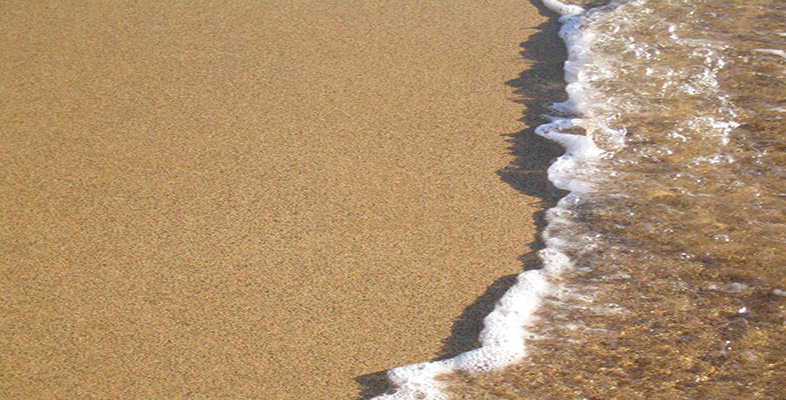5.3 Caledonian Orogenic Belt
From Figure 9, it can be seen that the Caledonian Orogenic Belt outcrops in several locations across the British Isles including Shetland, northern Scotland (between the Moine Thrust Zone and the Highland Boundary Fault), the northwestern and eastern corners of Ireland, the Southern Uplands, the Lake District, the Isle of Man and central and northern Wales.
SAQ 4
Using Figure 9 and Figure 11 in conjunction with the North and South Sheets of the Ten Mile Maps, how do the rock units that make up the Caledonian Orogenic Belt differ across the British Isles? Can any of the outcrops belonging to this orogenic event be subdivided in any way?
Answer
In the north of Scotland, Shetland and north-west Ireland, the Caledonian Orogenic Belt consists of high-grade metamorphic Moine (8–12) and Dalradian (13–28) rocks. This contrasts with the Caledonian Orogenic Belt outcrops from the Southern Uplands southwards, which consist of low-grade or unmetamorphosed successions from the Cambrian (64) to Silurian (74).
Therefore, the Caledonian Orogenic Belt can be subdivided into the high-grade metamorphic Caledonides (northern Scotland, Shetland and north-west Ireland), and the low-grade to non-metamorphic Caledonides (all locations from the Southern Uplands southwards).
Question 8
Look carefully at central and northern Wales on the Ten Mile Map (S).
(a) What trends do the major fold structures and outcrops in this part of the low-grade to non-metamorphic Caledonides follow? (Figure 9 may help you answer this and the following questions in this section.)
(b) How does this compare with the Southern Uplands, Lake District and Isle of Man? (You will need to look at both North and South Sheets for this second part.)
Answer
(a) In central and northern Wales, the outcrop patterns indicate that the major folds have NE–SW trending axes. These are well displayed between Carmarthen (SN(22)4119) and Llandrindod Wells (SO(32)0760), and Montgomery (SO(32)2296) and Llanrwst (SH(23)8061) where NE–SW trending tongues of 70–2 occupy the cores of anticlines extending into younger 73–4. This fold trend can be followed towards West Dyfed (Pembrokeshire (SN(22)0015)), where it swings round to a more E–W trend.
(b) The same general NE–SW trend can also be seen in outcrops of 70–3 in the low-grade to non-metamorphic Caledonide terranes of the Southern Uplands and Lake District. This is often referred to as the Caledonian structural trend.
Return to Wales and look in particular at the island of Anglesey (SH(23)38), and the territory between Bangor (SH(23)5673) and the tip of the Lleyn Peninsula (SH(23)1424).
Question 9
What is the stratigraphic relationship between the low-grade to non-metamorphic Caledonides and the underlying Precambrian Basement in this region (i.e. units 40, 41 and 60)?
Answer
In Anglesey, to the south-west of Bangor and on the Lleyn Peninsula, the Lower Palaeozoic rocks that make up the low-grade to non-metamorphic Caledonides can be seen to rest unconformably on the Precambrian Basement (some of which is metamorphic).
Now move back to the Ten Mile Map (N) and the high-grade metamorphic Caledonides in the northern Highlands of Scotland and Shetland.
Question 10
What trends in outcrop pattern or major folds can be detected in this region? (If you have a geological map of Ireland, you can answer the same question for the north-west of Ireland from County Donegal to County Galway.)
Answer
Throughout the Highlands of Scotland, a general NE–SW Caledonian trend can be recognised, particularly in the Dalradian (13–28). Likewise, some major faults with the same trend are also marked on the Ten Mile Map (N), e.g. the Great Glen Fault, which cuts south-west across the Highlands from Inverness (NH(28)6745) on the Moray Firth, along Loch Ness to Fort William (NN(27)1174) and is picked up again in Northern Ireland at Londonderry ((24)5422) (Figure 11). This fault is an important strike–slip fault, the movement of which may have begun during the Caledonian Orogeny, and certainly continued into the Mesozoic.
In Shetland, the trend of the high-grade metamorphic Caledonides swings round to a N–S direction, which can be traced down to the NNE–SSW trend on the Scottish mainland between Findochty (NJ(38)4767) and Portsoy (NJ(38)5766).
Using the Ten Mile Map (N) and Figure 11, it can be seen that the high-grade metamorphic Caledonides and the underlying basement (the Hebridean Terrane) in the north-west of Scotland are separated by several major thrust zones, the main one of which is the Moine Thrust Zone. This dips gently to the south-east. In this area, the Basement consists primarily of the Precambrian metamorphic Lewisian Complex (1–7) with the unmetamorphosed Torridonian sediments (61), and some Cambrian (62–3) and Ordovician sediments (67) on top. The Basement has been overthrust from the south-east by the Northern Highlands Terrane, which consists of younger metamorphosed Moine Supergroup sediments. The unmetamorphosed nature of the Torridonian shows that the Northern Highlands Terrane must have been metamorphosed before being thrust on top of the Hebridean Terrane.
